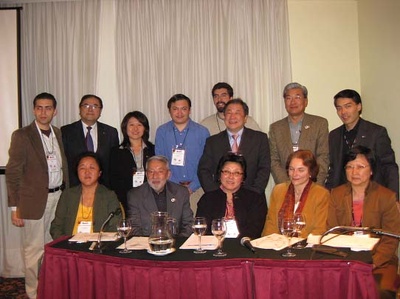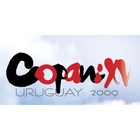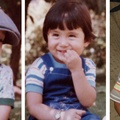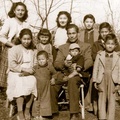1. THE ‘NIKKEI’ CONCEPT:
When, beginning in 1869, groups of Japanese began leaving Japan in search of means of sustenance; it became necessary to identify them in some way. As a result, the concept ‘Nikkei’ is coined to identify those who, like the dekasegi [“work away from home”], stay temporarily away from Japan. But this concept is called into question when some of those who left fail to return to the Motherland, staying indefinitely in the receiving countries. The new horizons discovered overseas and their own circumstances have transformed those Japanese into immigrants. In this new scenario, the passing of the years and the immigrants’ distance from their original families lead them to form new families according to rules different from those of their native land; to mix with the blood of other ethnicities; to have children raised differently; and to accommodate their way of life to those of distinct cultures and their local customs. In less than half a century, the aforementioned definition of ‘Nikkei’ no longer matches reality even though those immigrants continue to use the term. They also begin to broaden its scope, applying it to their descendants as well. Yet, the essence of what they stand for is no longer true. The world has been turned upside down. They themselves had to change shortly after leaving Japan. Even the country itself had to change its ways every now and then so as to satisfy pressing requests from a demanding and hostile world—and in order to achieve that, it had to make use of its children cast from different molds.
Hence, those who changed so as to fit into new surroundings stopped being considered as ‘equals’ in Japan even if they had the same blood in their veins. (The “quality of foreignness” invariably follows those who have lost the social consensus.) Even less likely was the recognition of their descendants born and raised in other parts of the world. As a result, nowadays the term NIKKEI no longer represents the concept of “being Japanese.” Instead, NIKKEI is a better fit to the Uruguayan, Brazilian, Canadian, Mexican, Chilean or any other citizen anywhere in the world who carries within himself a hereditary and/or cultural Japanese baggage with which he both identifies and shares ties.
That allows the definition of the term “Nikkei” to possess great malleability so as to differentiate its various components. A good example of that trait would be the 2001 COPANI held in New York City, which analyzed the term in accordance with a clearly “collectivistic” criterion—a perfectly valid one, for it’s impossible to imagine that a man could prosper in an alien environment without internalizing some of its characteristics when building his foundation with local components, which, for their part, absorb some of his own singularities, needs, and concerns. Therefore, the term NIKKEI has as a starting point those immigrants and their descendants with a Japanese family background. But it also encompasses those—whether or not they have Japanese blood—with whom the aforementioned two groups have blended as a result of emotional, social or legal ties. (Their local wives are obvious examples.) Some go even further, applying the term “Nikkei” to locals who, through interwoven relationship networks, internalize Japanese cultural manifestations. Within this far-reaching scope, the number of “Nikkei” has grown markedly even though they remain spread out in a vast “Nikkei World” where they are incapable of recognizing one another or, even less so, comprehend their requisite sense of belonging and responsibilities.
2. THE RESTRICTED NIKKEI RESPONSIBILITY:
What fundamentally defines the “Nikkei” with Japanese blood is the baggage of Japanese morals that accompanies them. These are the remnants of that collectivistic morality brought along with the first immigrant parents of the Meiji era; a morality that had been formalized in the preceding Tokugawa era, and that had been structured by the Japanese people through millennia.
Since “individualism” is the basic premise of Western thought, “collectivism” arrives in these shores as a modality without a future. At first, becoming organized according to the concept of collectivism is accomplished with relative ease by those who arrived in groups and are banded together in “colonies.” The same doesn’t happen to others who arrived informally, one at a time, having first to learn the meaning of the word “individual.” Even so, years later they also succeed in creating the one sui generis collective environment that was within their reach: their own nuclear family. Among the others, secular collectivism is able to find a truly permanent setting only within the restricted spheres of the Nikkei Family as well.
And that family not only grows stronger, but also progresses continuously throughout the years, always inspired by the maxims of Japanese morality which, curiously, continue to be passed on from generation to generation. Hence, the respect for the established order, and the high value given to education and work ethics, and to the preservation of the family’s honor. But alongside those there exists the idea of “uniformity” that endeavors to make the family blend into the neighborhood; consequently, the Nikkei strive to maintain a low-profile attitude. Following that concept, each person establishes his own sakoku in an attempt to create a personal space as independent and self-sufficient as possible. As a result, his contacts with the outside world are invariably rare, even with those institutions they themselves helped to build and to perpetuate. On the other hand, the educational success of their children, who begin to occupy new professional spaces within the social sphere, force a certain openness. Marriages to non-Japanese partners contribute some more. That broader scope, no doubt, continues as different variations of family ties. But beyond that, silence. Certainly, the best example of this unique form of anonymous behavior can be illustrated by the “Fujimori Case” in Peru. Although Fujimori is recognized as an exceptional man who helped to rescue his country from extreme poverty and corruption to place it on the path to progress, they can’t forgive him for having exposed the average Nikkei to the curiosity of others.
Throughout the Americas we can find today a centenary Nikkei family fully acknowledged for its abilities, contributions, and sobriety. Nevertheless, many Nikkei maintain this “respectful” distance that allows them to ignore a significant part of the global reality, which, whether they like it or not, is mapping both the present and the future of their existence.
3. ‘THE NIKKEI IN A GLOBALIZED WORLD”:
Even though this heading was supposed to have been the chief topic of COPANI XV held in Uruguay, it was not a compulsory subject—thus, it was dealt with only tangentially. Globalization is a topic that for a long time has remained misunderstood by most people. Hidden by a deceiving fog, its overwhelming characteristics always have foreign names. All we know is that it’s related to capitalism and to the concentration of economic power. What is the underlying cause of these silent battles that result in the world’s most important goods changing hands, while becoming increasingly more concentrated in the possession of a very few? Needless to say, the lack of knowledge of those details and consequences rarely lead to a steady concern because ultimately there’s that acceptance of the “biblical evil,” according to which there must always be men despoiling the property of others. We only start worrying a little if we discover that the looting has reached our own neighborhoods and that the victims are people we know. A clear example is that of Argentinean dry cleaners. That source of traditional work for thousands of Nikkei families is quickly being annihilated by big businesses in the cleaning service field—companies against which it’s impossible to compete. The justification is simple. It’s a part of the unavoidable “collateral damage” that is a consequence of ‘the inroads of progress.”
We also get simple explanations justifying the systematic despoiling of whole nations. We’ve thus become uninterested witnesses, as many of our countries lose their identities while being turned into parts of anonymous alien entities. Their borders become increasingly weak. New laws, treaties, and allied nations allow the free manipulation of their riches. All of this is stimulated by government agencies charged with tracing the path to an immediate future. If such a procedure doesn’t work “within democratic parameters,” then—as we’ve seen in other parts of the world—whole cultures are violated due to their defense of their cultural heritage and fundamental values. In other cases, fomented civil conflicts lead to disastrous results in which there are only losers, and where fear, poverty and hunger allow the opening of any door. Words such as “crisis” and “war” aren’t left out either. Facing storm clouds that look as if they’ll hide the blue of the sky for good, it’s easy for the imagination to give birth to certain science-fiction stories: In a not too distant future, a single planetary culture will be imposed and managed by an omnipotent planetary government ruling over the planetary human masses.
If this is true—and since the Nikkei are a small minority—what could we do to prevent this potential, overwhelming avalanche? It’s possible that we’re already between the sword and the wall, and that we only have two options. In fact, we could say that our situation is similar to the one faced by Japan when the Meiji seized imperial power in 1868: Do we meekly accept to be razed by those powerful forces or do we strive to preserve our Nikkei identity?
If we lean toward the first option, all we need to do is to let events follow their course while waiting for the word “Nikkei” to disappear from our dictionaries—along with, obviously, the definition of what it means to be “human.” If we choose the second option, then time is running out! With our well-structured families as starting points, we need to raise our heads, look around, and come up with strategies to unify our dispersed Nikkei community. As scattered little sticks, we’re an easy target. According to the lessons we’ve learned, we have to band together into a firm bundle. In order to achieve that, we can rely on thousands of families in the middle and upper classes, on social organizations that belong to us, on international networks, and on local communities of which we’re part and that appreciate the Nikkei character and uniqueness. All we need is the will to give impetus to the centripetal forces we have at hand, while restructuring collectivized entities—21st -century style—that could reach unsuspected dimensions.
Meanwhile, we must put into practice strategies to popularize an “education of vital complements .” That means filling in the voids of current family and formal education in order to: a) develop a more acute analytical ability to uncover half-truths that distort reality, b) bring to light the key axioms of Japanese morality, which historically have directed the steps of the family, so as to evaluate their positive and negative aspects within the context of the passing of time, c) study the fragments of Japanese history to understand what it means to be “Japanese” and “Nikkei,” d) form an understanding about the shining path of the kokoro as a counterpoint to materialism, e) create spaces for the development of steady relationships through Japanese sports, arts, and entertainment—though always mixed with local cultural activities.
Nikkei youth has much to contribute to all that. In fact, they must forget the old Japanese saying that “the nail that raises its head gets the hammer” in order to make use of those abilities that make them special (that Japanese advantage). Therefore, they must take positions of leadership among their local peers and communities, becoming active players in systematic campaigns of agglutinative behavior and in the creation of works for the common good.
If we succeed in mustering the will to turn those measures into reality, the “Nikkei World” would have some high protective walls. Due to their proven efficiency in the work sphere and their well-known pacifism, the Nikkei shouldn’t even be the object of specific pressures because, indeed, they would be expected to fall under their own weight, thus becoming part of the great conditioned masses. Of course, to remain unscathed they would need to act only at critical times and when common sense dictates—and with the flexibility of bamboo: bending without breaking.
Eventually, as history has shown thousands of times, Truth would return to its central place. The Nikkei would then be among the first to make use of fields where cherries could fully blossom.
* The above article is the result of the discussions that took place at the session “Multiracial / Multi-ethnicities in Nikkei Communities” in the workshop organized by Discover Nikkei at the XV COPANI, held in September 18 in Montevideo, Uruguay.
© 2009 Ariel Takeda







